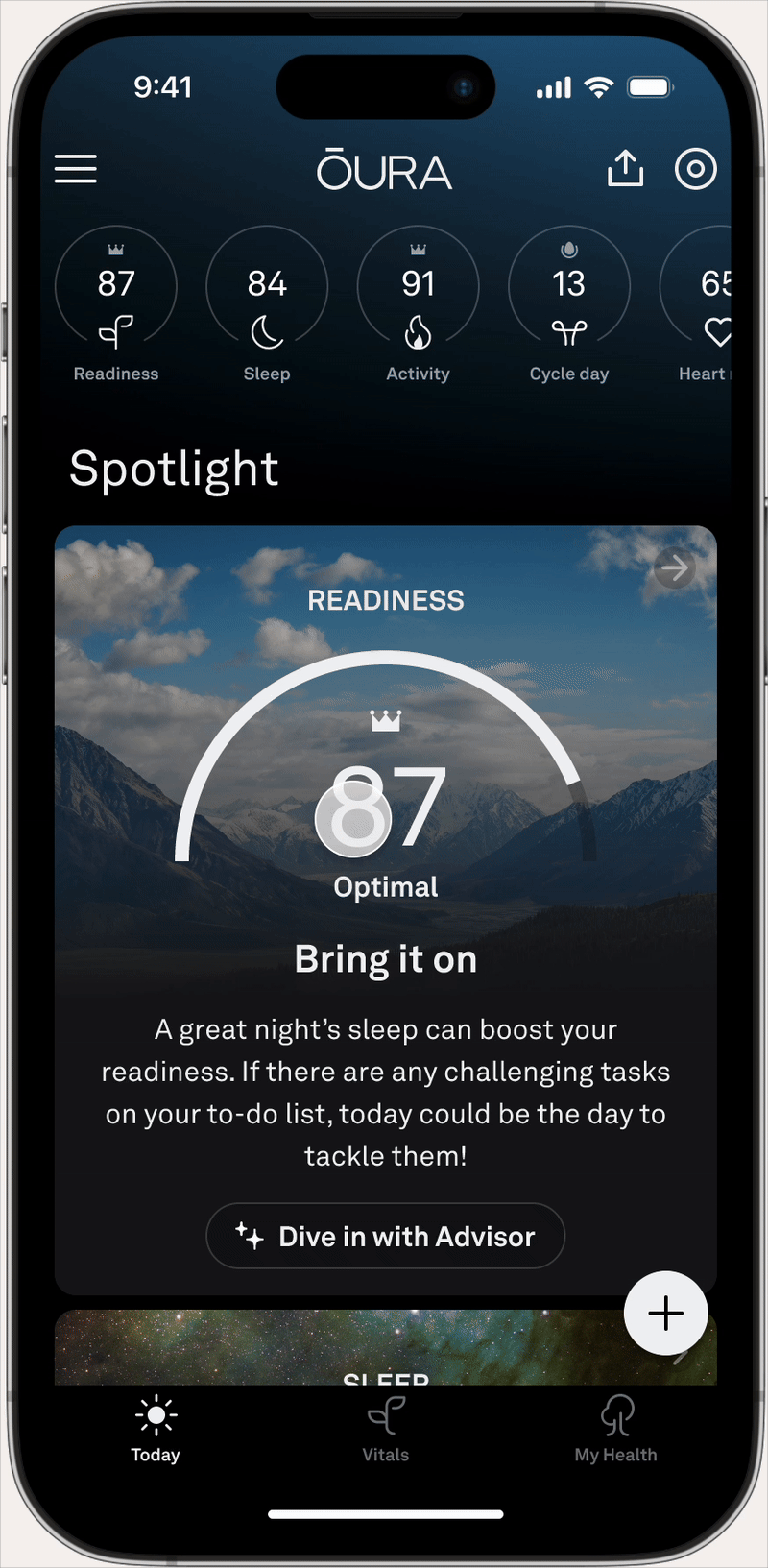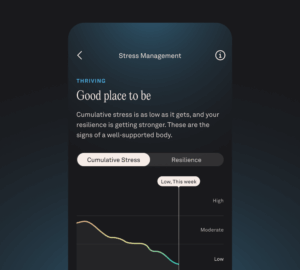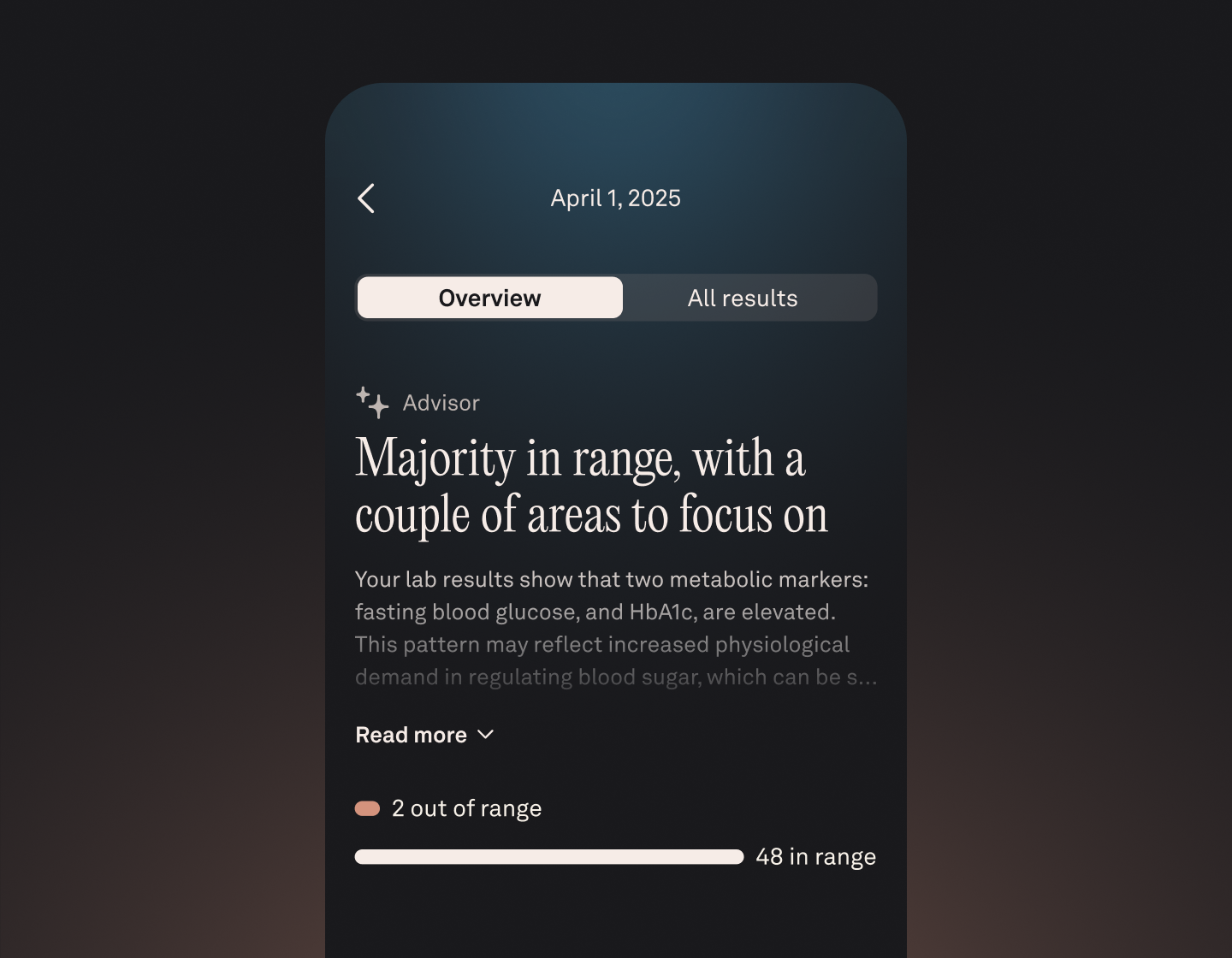With Oura, you can already monitor how your body responds to your lifestyle in terms of sleep, stress, activity, nutrition, and more. But what’s happening beneath the surface? Find out with Health Panels, a new feature for Oura Members, specially priced at just $74.25 (normally $99) until December 31, 2025.
| Health Panels are HSA and FSA-eligible. |
How It Works
 You can now schedule lab testing and receive results directly in the Oura App, gaining insight into 50 health biomarkers that reveal how your metabolism, heart, liver, kidneys, and immune system are performing. With AI-powered guidance, you’ll gain a clearer view of your overall health, in addition to the 50+ health and wellness insights that Oura Ring tracks.
You can now schedule lab testing and receive results directly in the Oura App, gaining insight into 50 health biomarkers that reveal how your metabolism, heart, liver, kidneys, and immune system are performing. With AI-powered guidance, you’ll gain a clearer view of your overall health, in addition to the 50+ health and wellness insights that Oura Ring tracks.
”Oura Ring allows you to listen to your body. With the introduction of Health Panels, we’re adding another language you can tune into: the cellular functioning of your body,” says Chris Curry, MD, PhD, Clinical Director of Women’s Health at Oura. “With the combination of the sensor data from Oura Ring and the lab data, Oura Members will now be empowered to hear—and understand—so much more of what their bodies are trying to say.”
LEARN MORE: Introducing Health Panels at Oura
The Health Panels feature is currently available Oura Members (ages 18-64) based in the United States through the Oura App. Health Panels are not available in Arizona, Hawaii, New Jersey, New York, or Rhode Island due to state-level legal and regulatory restrictions. More countries coming soon.
What Are Biomarkers?
Biomarkers are measurable indicators of how your body is functioning. Oura Ring already tracks several key biomarkers including heart rate, heart rate variability, sleep duration, blood oxygen levels, fertile window, and many more. Now, with Health Panels, you can gather even more extensive data about your health.
Blood biomarkers are considered a gold standard because they provide direct insight into how your organs, metabolism, and immune system are performing at a cellular level. While wearable data from Oura Ring shows how your body is doing in real time, blood biomarkers capture the underlying processes driving those responses—making the two together the most powerful way to understand your overall health.
What Your Biomarkers Can Tell You About Your Health
Your biomarker results offer more than just a snapshot of your current health; they provide insights into how your body is poised to navigate the future.
Oura’s Health Panels feature analyzes 50 biomarkers, categorized to reflect your body’s essential systems.
Metabolic Health
Biomarkers tested: Glucose, HbA1c, Insulin
These markers show how efficiently your body processes and stores fuel. Glucose, HbA1c, and insulin reflect blood sugar regulation and long-term metabolic risk.
Cardiovascular Health
Biomarkers tested: Total Cholesterol, HDL, LDL (calculated), Non-HDL, Cholesterol/HDL Ratio, LDL/HDL Ratio, Triglycerides, ApoB, Lp(a)
These biomarkers provide a comprehensive picture of heart and blood vessel health. Total cholesterol, HDL, LDL, Non-HDL, and the Cholesterol/HDL and LDL/HDL ratios reflect how well fats are transported and balanced in your blood. Triglycerides indicate how efficiently your body stores and uses fat for energy. Advanced markers like ApoB and Lp(a) go a step further, offering deeper insight into long-term cardiovascular risk and plaque buildup potential.
READ MORE: 8 Ways to Improve Your Cardiovascular Health
Liver Health
Biomarkers tested: ALT, AST, ALP, Bilirubin, Albumin, Total Protein, Albumin/Globulin Ratio
Your liver plays a central role in detoxification, nutrient processing, and protein production. Enzymes like ALT, AST, and ALP rise when the liver is under stress, while bilirubin and protein markers reflect breakdown of red blood cells, nutrition status, and overall liver function.
Kidney Health
Biomarkers tested: BUN, Creatinine, BUN/Creatinine Ratio, eGFR
Your kidneys filter waste, regulate hydration, and maintain blood pressure. BUN and creatinine show protein metabolism and kidney efficiency, while eGFR reflects filtration capacity. Ratios provide additional insight into hydration and kidney balance.
Electrolytes
Biomarkers tested: Sodium, Potassium, Chloride, Calcium, Carbon Dioxide (CO₂)
Electrolytes are essential for hydration, nerve function, and muscle contraction. Sodium and chloride regulate fluid balance and blood pressure, while potassium supports heart rhythm, nerve signals, and muscle performance. Calcium also plays a role in muscle contraction and bone health, while CO₂ reflects your body’s acid–base balance and respiratory function.
Immune Health
Biomarkers tested: WBC, Neutrophils, Lymphocytes, Monocytes, Eosinophils, Basophils, Globulin
These markers reflect immune readiness and response. White blood cells, including the individual types of white blood cells, show how your body is handling infection or stress, while globulin proteins include antibodies that defend against illness.
READ MORE: 9 Tips to Strengthen Your Immune System
Inflammation
Biomarkers tested: hsCRP
Inflammation is your body’s response to stress, infection, or injury. hsCRP is the most sensitive marker of low-grade, chronic inflammation and can indicate whether your body is in balance or under hidden strain.
Other biomarkers, such as white blood cell count, absolute neutrophils, monocytes, basophils, platelet count, and MPV, also provide insight into inflammatory activity. Together, these patterns can offer additional context about how your immune system and blood health reflect inflammation over time.
Blood Health
Biomarkers tested: RBC, Hemoglobin, Hematocrit, MCV, MCH, MCHC, RDW, Platelet Count, MPV
These markers assess the composition and quality of your blood. They help identify risks like anemia, nutrient deficiencies, or clotting problems. Maintaining balanced blood markers supports energy, recovery, and resilience over the long term.
How to Understand Your Health Panels Results
Oura makes the insights from your Quest tests simple to understand, working with SteadyMD to categorize test results into ranges. For each biomarker, your results will be categorized as:
- In Range: Within the clinically accepted healthy zone.
- Above Range: Elevated, potentially signaling excess strain, inflammation, or risk factors.
- Below Range: Lower than optimal, which can sometimes suggest nutrient deficiencies or other issues.
- Critical: Requires immediate medical follow-up. You will receive a call from a physician from SteadyMD to discuss your results.
How Does Your Lifestyle Impact Your Results?
Your biomarkers don’t exist in a vacuum; they reflect how your daily habits are shaping your body at the cellular level. The same choices that influence your Oura Scores also show up in your lab results.

Nutrition
What you eat has the most immediate impact on glucose, insulin, and lipid levels. A diet high in refined carbs or added sugars can elevate glucose in the short term and HbA1c in the longer term, while diets rich in fiber, healthy fats, and protein help stabilize them. Similarly, high saturated fat intake may raise LDL cholesterol and ApoB, whereas omega-3s and plant-based foods support healthier lipid profiles.
| Member Tip: Let Oura Meals unpack how well your choices are fueling you, so you can feel your best each day. Beat cravings and energy slumps, identify nutritional imbalances, and stay on track toward your goals. |
Activity & Fitness
Regular movement improves insulin sensitivity, strengthens your cardiovascular system, and supports healthy blood pressure and lipid levels. Aerobic exercise, in particular, can reduce triglycerides and hsCRP (inflammation marker), while resistance training boosts glucose metabolism and preserves muscle as you age.

Sleep
Sleep affects every system in your body. Inadequate or irregular sleep can throw off glucose regulation, raise inflammatory markers, and even impact blood pressure. Consistent, restorative sleep helps maintain metabolic balance, supports immune function, and keeps hormones in check.
Stress
Chronic stress elevates cortisol, which can indirectly affect glucose, lipids, and inflammation (hsCRP). Practices that enhance autonomic flexibility—such as breathwork, meditation, or contrast therapy—can help keep your stress response balanced, improving both short-term recovery and long-term health markers.
| Member Tip: Access over 70 guided meditations within Explore content in your Oura App to help you manage stress more effectively. |
Other Lifestyle Factors
Your biomarkers are largely a reflection of your lifestyle, capturing the influence of hydration, alcohol, environment, medications, hormones, and even social connection. While some shifts come from age or genetics, many are shaped by daily choices, giving you a clear picture of what you can control to support long-term health.
How Often Should You Test?
Most people benefit from testing at least once a year to establish a baseline. If you’re making lifestyle changes—like adjusting diet, starting new medications, or focusing on performance goals—testing every three to six months can help you track your progress.
Because Oura integrates your results with your day-to-day data, you’ll get more than just numbers. You’ll see how changes in your sleep, activity, and stress responses translate into real, measurable shifts in your health.
RELATED: Live Stronger, Longer: Longevity Tips from Oura Members











